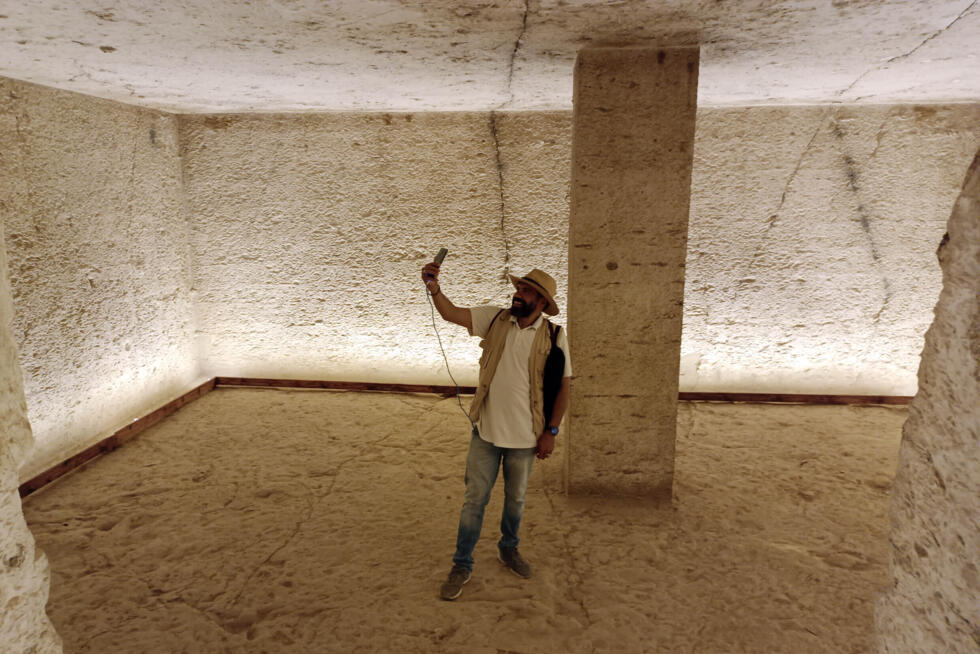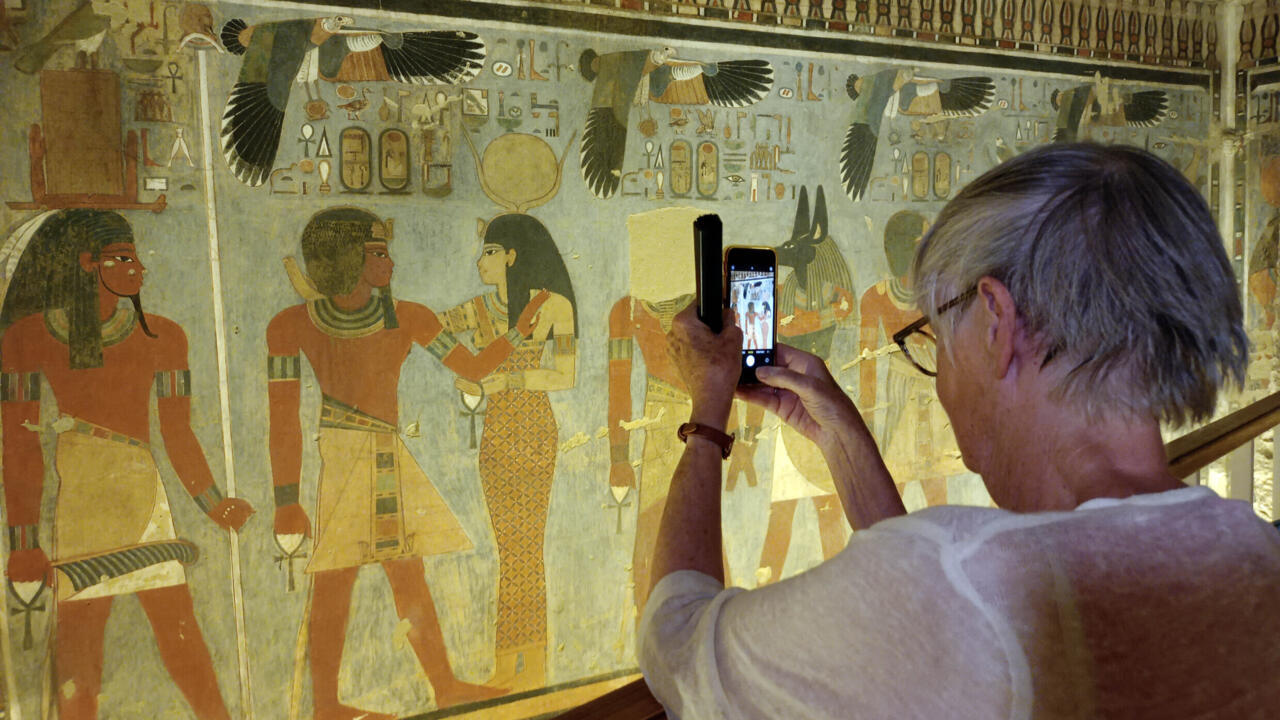Egypt’s tourism and antiquities minister, Sherif Fathy, unveiled to reporters the newly refurbished site, which dates back more than 3,000 years.
Mohamed Ismail Khaled, head of Egypt’s Supreme Council of Antiquities, said restoration involved more than two decades of “incredibly delicate work, because the tomb was suffering severe deterioration”.
Authorities led reporters on Saturday through the colossal space, which boasts floor-to-ceiling wall paintings, the bright blue of the frescoes shining even in the dim light.
Egypt unveils new archaeological wonders near Luxor’s iconic temple of Queen Hatshepsut
One of your browser extensions seems to be blocking the video player from loading. To watch this content, you may need to disable it on this site.
In its centre, visitors observed Amenhotep’s massive granite sarcophagus lid, etched with hieroglyphics – far too heavy to be carted away like the tomb’s other contents.
The site was first documented in 1799 during the brief Napoleonic conquest of Egypt. After a long history of excavation, looting and heavy damage, it was restored with support from the Japanese government and UNESCO.
Carved into the hillside on the west bank of the Nile, opposite the city of Luxor, the tomb is “decorated with wall paintings that are among the most exquisite of those surviving in the royal tombs of the Eighteenth Dynasty”, according to Japan’s UNESCO mission.
‘Highest’ standards
Decades of deterioration had left the structure at risk of collapse.

To save it, more than 260 specialists – restorers, researchers and highly-trained technicians – worked at what UNESCO regional director Nuria Sanz said Saturday was the “super highest level of international standards for integrated conservation”.
Amenhotep III ascended to the throne as a teenager and ruled for around four decades of prosperity, stability and artistic grandeur before dying in 1349 BC at the age of 50.
He was buried in the famed Theban Necropolis, where Ancient Egyptian kings, queens, priests and royal scribes were interred between the 16th and 11th centuries BC.
Following French and British excavations in 1799 and 1915, most of the tomb’s contents were taken away to the Louvre Museum in Paris, the Metropolitan Museum in New York and Highclere Castle in the United Kingdom, according to Waseda University in Japan.
Read moreEgypt unveils first ancient royal tomb since Tutankhamun
Amenhotep III’s mummy and sarcophagus are housed in Cairo’s National Museum of Egyptian Civilisations, while the Egyptian Museum in Tahrir and the capital’s new Grand Egyptian Museum house colossal statues of the pharaoh seated next to his wife.
Near his tomb, Amenhotep’s massive mortuary temple known as Kom al-Hetan has suffered extensive damage from annual Nile flooding, but two giant granite statues known as the Colossi of Memnon survive, greeting visitors into the ancient valley.
(FRANCE 24 with AFP)
Crédito: Link de origem



Comments are closed.